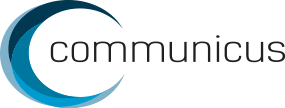Women make or influence 85% of consumer purchases (source: Bloomberg), yet 40% of women do not identify at all with the women they see in advertising (source: Unilever). Over half (55%) of adults believe women are portrayed negatively in the media (source: TiVo Research), and 90% of parents say they are concerned that there are no role models for girls (source: ABX).
The problem: Only 3% of ads show women in leadership positions, 2% show women being intelligent, and 1% show women with a sense of humor (Source: ANA/The Female Quotient). Given that children start developing their self-confidence by 5 years old, and their sense of self is heavily influenced by what they see, we’re providing an extremely limited scope of what they can be. And not only does this affect young girls, but it effects the view that we shape of women in the minds of young boys as well.
But what if advertisers, media makers and influencers led the movement for women to be seen accurately? If they can see her, they can be her.
The ANA and the Female Quotient are on a mission to use the #SeeHer movement to lead the way to accurately portray all women and girls in the media, so that by 2020, girls see themselves reflected as they truly are. The goal: to promote women and girls seeing themselves as the empowered, confident individuals they are and to create a cultural shift in the way women and girls are viewed in the world.
Not only will this movement drive a positive shift in society, but brands who commit to equal representation in advertising are also seeing a positive shift in greater brand affinity and improved sales.
So far, more than 70 of the nation’s most respected marketers are on board with #SeeHer, representing over 1,000 brands and a combined $50 billion in US ad spend. These advertisers are incorporating a Gender Equality Measure (GEM) to quantify consumer reaction to the treatment of women in advertising and programming.
And the business results for these companies have been noteworthy. Overall, ads with high GEM scores provide an 11% lift in brand reputation and a 26% lift in purchase intent, with a remarkable +45% lift in purchase intent among women. Take these examples from the “CMO Visionaries of the #SeeHer Movement” panel at 2018 Cannes Lions:
Fiona Carter, Chief Brand Officer, AT&T – The highest scoring GEM ads drive an 11% lift in brand recall, 17% lift in consideration and an 8% lift in brand reputation
Keith Weed, CMO, Unliever – ‘Progressive’ ads are 25% more effective and 18% higher on purchase intent
Antonio Lucio, CMO, HP – A 5.5x increase in GEM scores related to improved purchase intent by 26%, and revenue per impression grew 33%
In the words of Fiona Carter, “If you follow your passion and your purpose it’s not only personally rewarding but rewarding for your company in terms of business effectiveness.” As advertisers, media makers and influencers, we have the power to shape the views of the next generation. And female representation is only the beginning.


